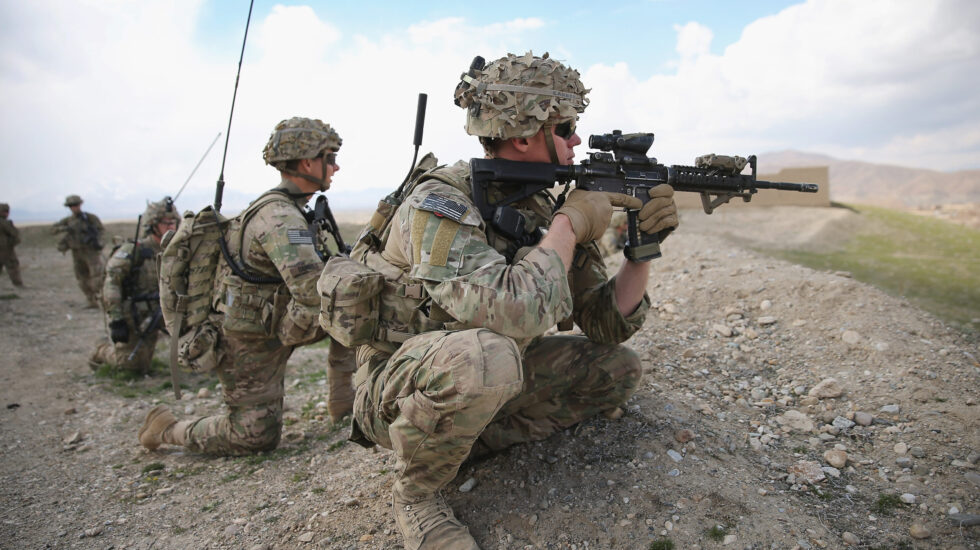American troops cleared out of Bagram air base on Thursday night, in a move The New York Times describes as a signal that “major U.S. military operations in Afghanistan are all but over.”
The departure from Bagram, the largest and most important base in Afghanistan, comes well ahead of President Biden’s September 11, 2021 deadline to end America’s longest war. The Afghan military “will protect the base and use it to combat terrorism,” said Fawad Aman, a spokesman for Afghanistan’s Ministry of Defense.
The Washington Post provides details:
The transfer to Afghan forces was completed with no ceremony or fanfare, in a remarkably quiet end at a base that was for years the nerve center in its counterterrorism campaign across Afghanistan. Fighter jets, drones and cargo planes took off from Bagram’s twin runways day and night as U.S. Special Operations troops based there hunted al-Qaeda, the Islamic State and other militant groups in raids in Afghanistan’s rugged mountains to the east. Each of the previous three U.S. presidents visited the airfield during visits to Afghanistan.
According to The Associated Press, looters penetrated the base after American personnel cleared out. Eventually, they were runoff by the Afghan military.
The U.S. has committed four billion dollars each year through 2024 to finance the Afghan security forces. On Thursday, Defense Secretary Lloyd Austin spoke with his Afghan counterpart, pledging that the U.S. was invested in the “security and stability” of a country where 2,312 American soldiers died since 2001. Approximately forty thousand civilians have perished in the war during that same period. The U.S. military operations in Afghanistan have cost $824.9 billion.
The New York Times explains that the country is in danger of falling to the Taliban – and quickly:
The Taliban are inching closer to Kabul after having taken about a quarter of the country’s districts in the past two months.
Hundreds if not thousands of members of the Afghan security forces have surrendered in recent weeks, while their counterattacks have taken back little territory from the Taliban. And as the Afghan forces fracture, regional militias have appeared with renewed prominence, in an echo of the country’s path toward civil war in the 1990s.
“Civil war is certainly a path that can be visualized,” the top American commander in Afghanistan, Gen. Austin S. Miller, told reporters on Tuesday.
The Bagram airfield was originally constructed by the Soviet Union in the 1950s. Once they left Afghanistan in 1989, the site became a hotly contested prize, with the Taliban and the Northern Alliance fighting for it. Eventually, in 2001, it came under American and NATO control. At the height of operations, in 2012, 100,000 troops passed through the massive compound, which it includes a hospital, a prison, multiple hangars and runways, and many support buildings. It was frequently the target of suicide bombings and rocket attacks.
The Washington Post explains that many American casualties were sent home via Bagram:
“Ramp ceremonies,” in which fellow service members drape a deceased service member’s remains in a U.S. flag, were a common sight there at the height of the U.S. war. A camp at Bagram was named after Senior Airman Jason Cunningham, who died in a battle in March 2002 and is credited with saving the lives of 10 other people.



